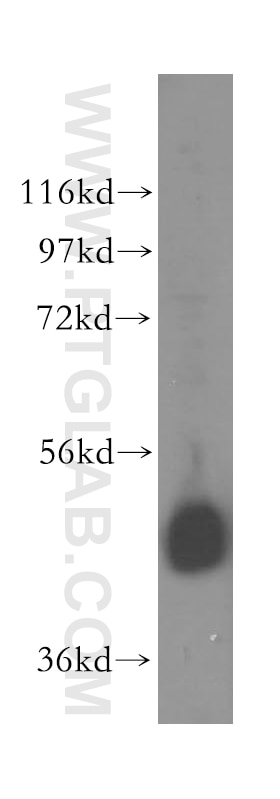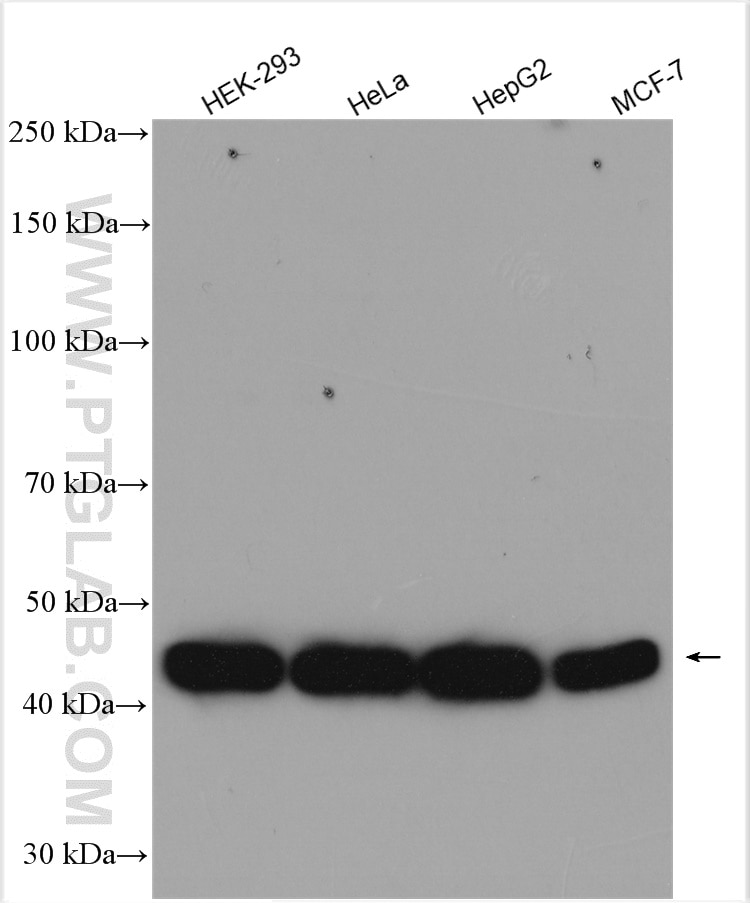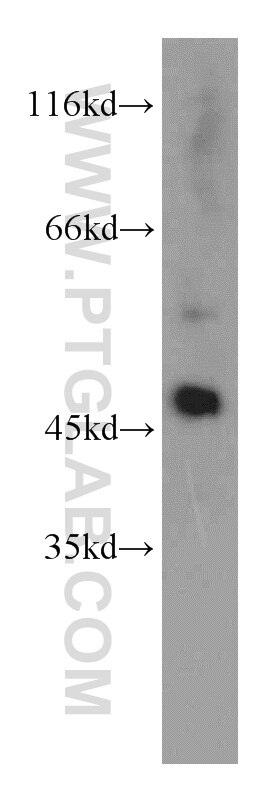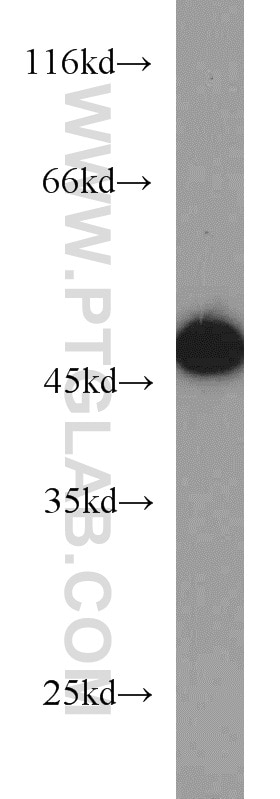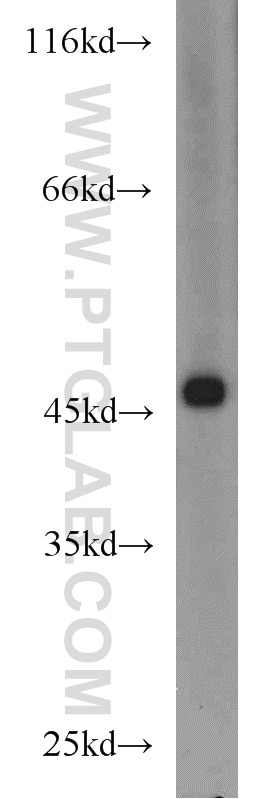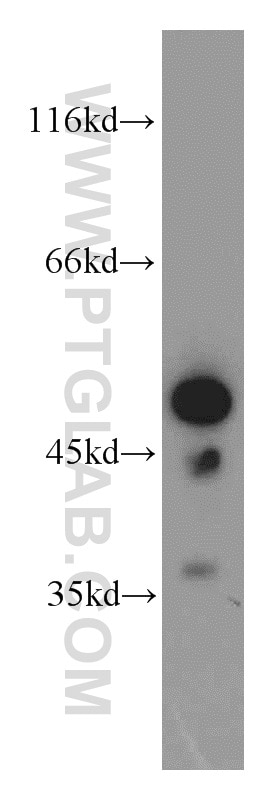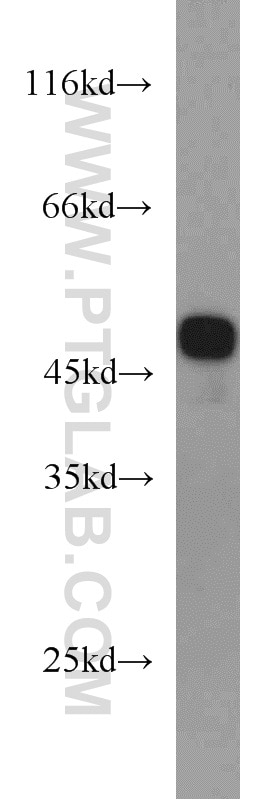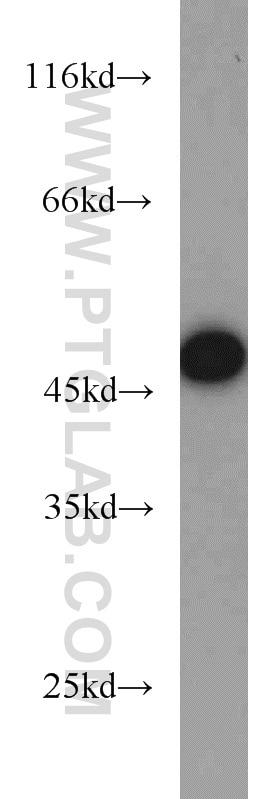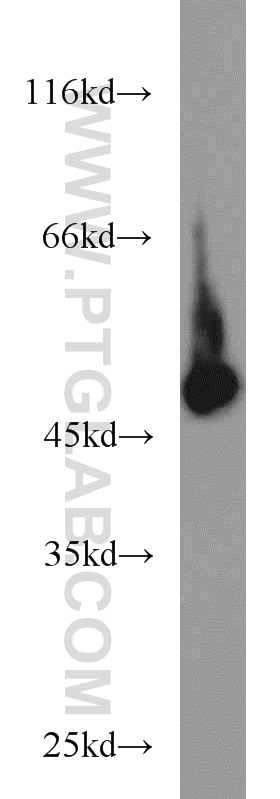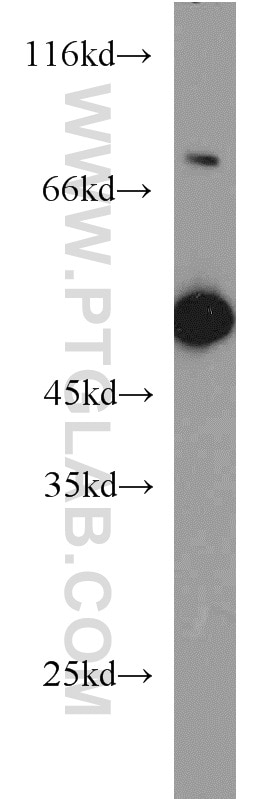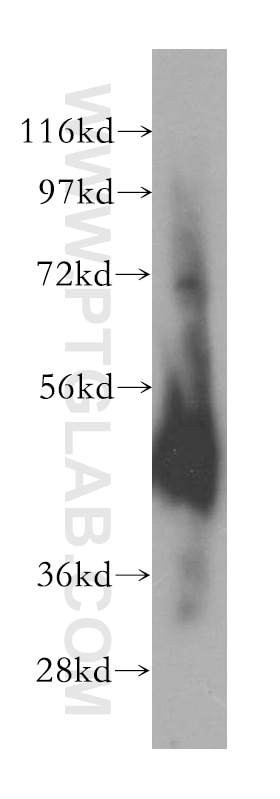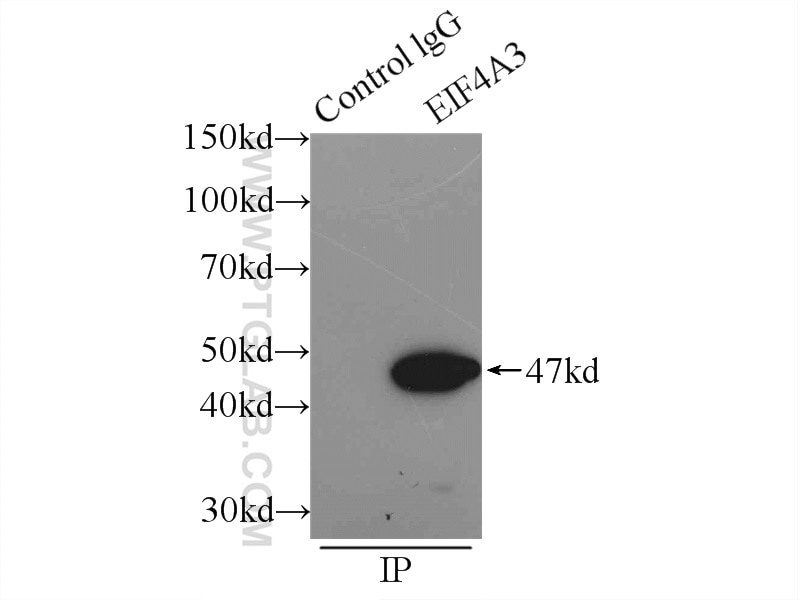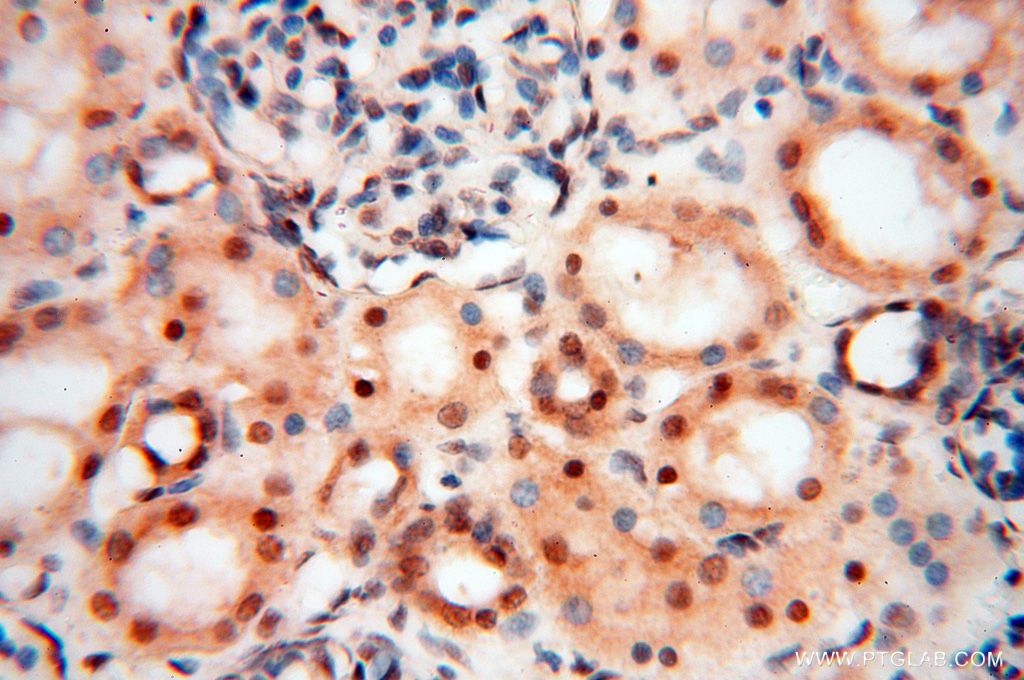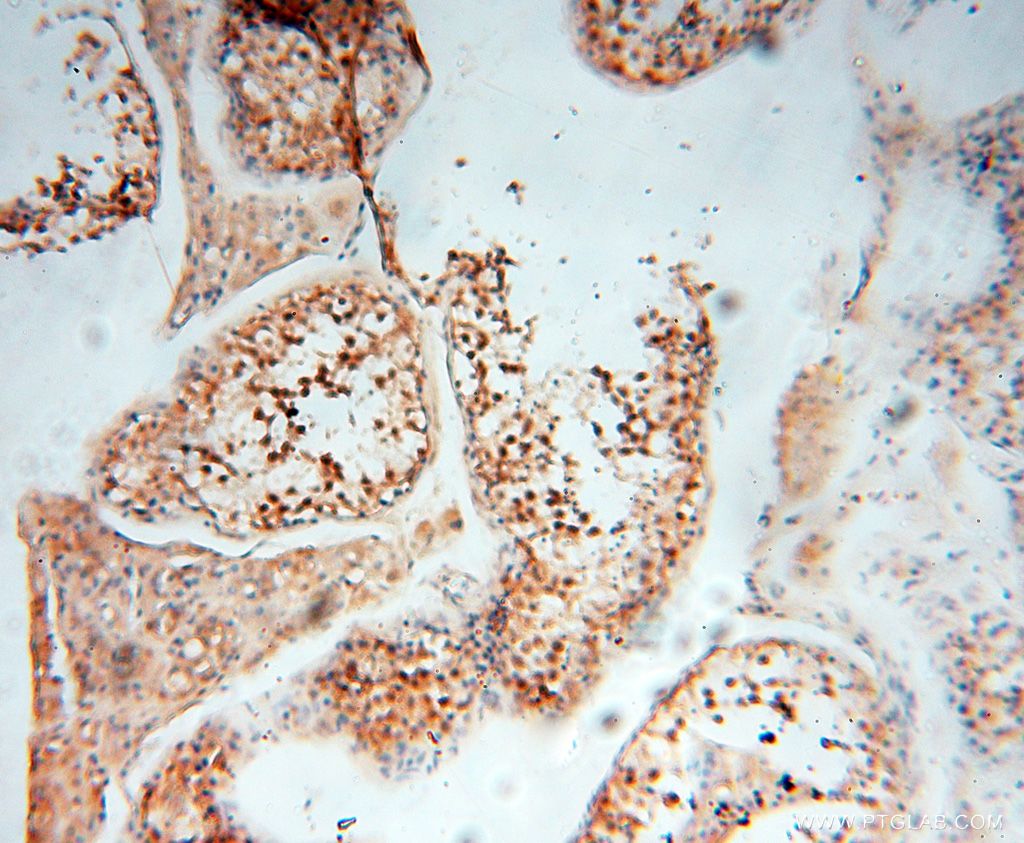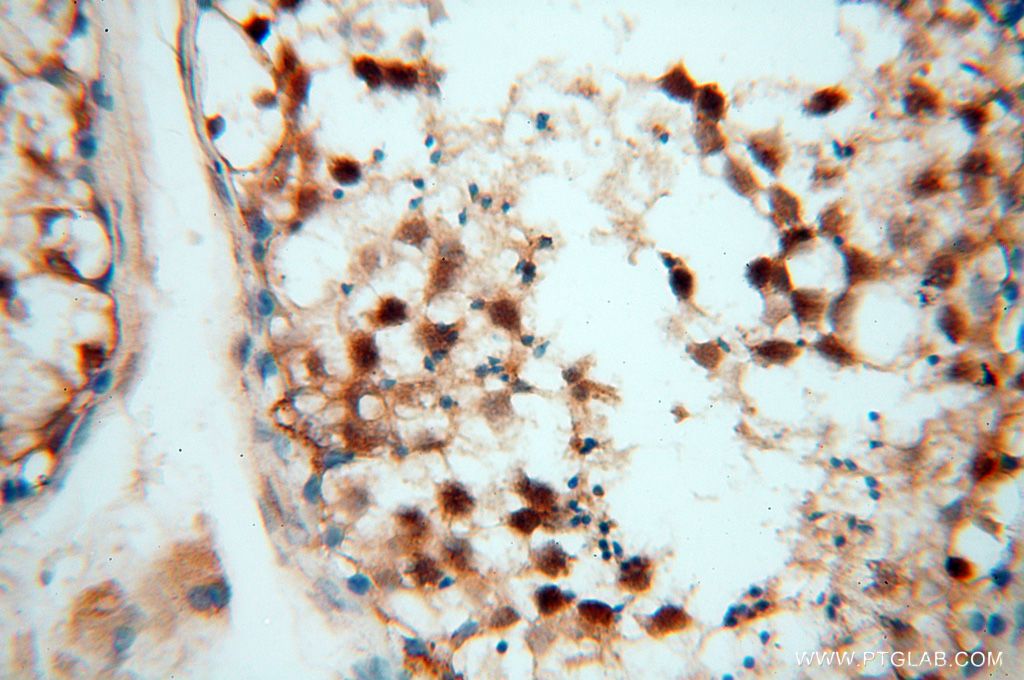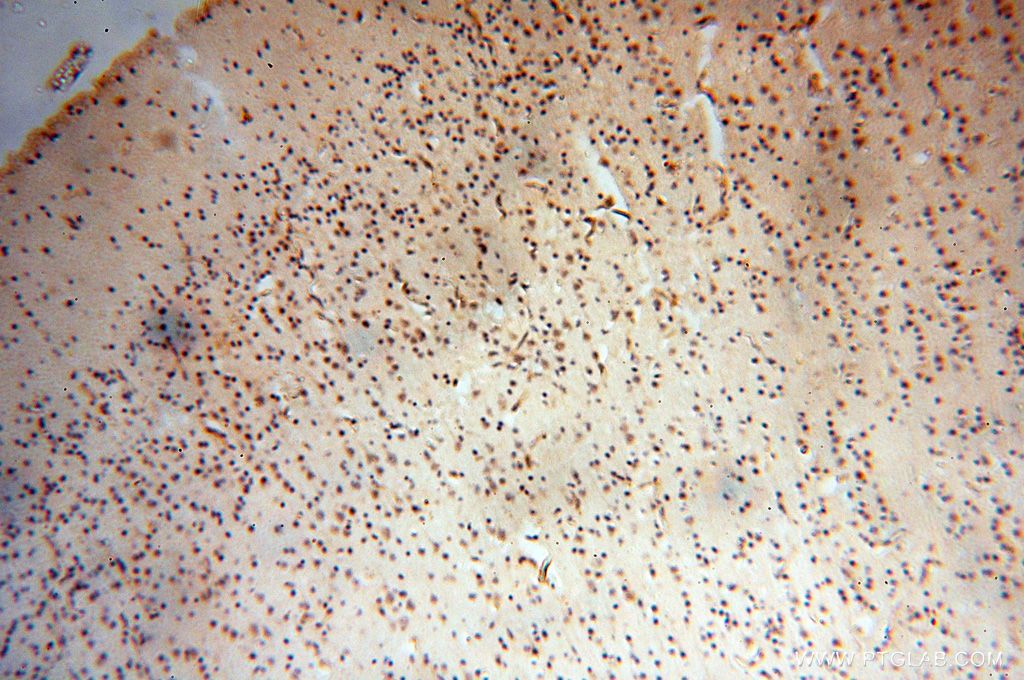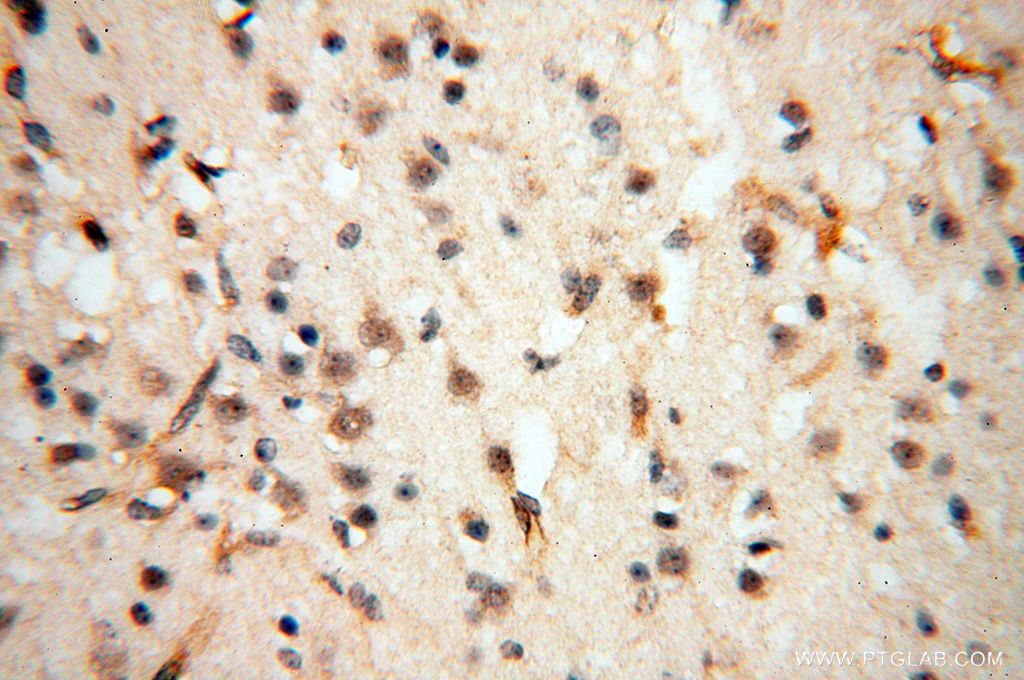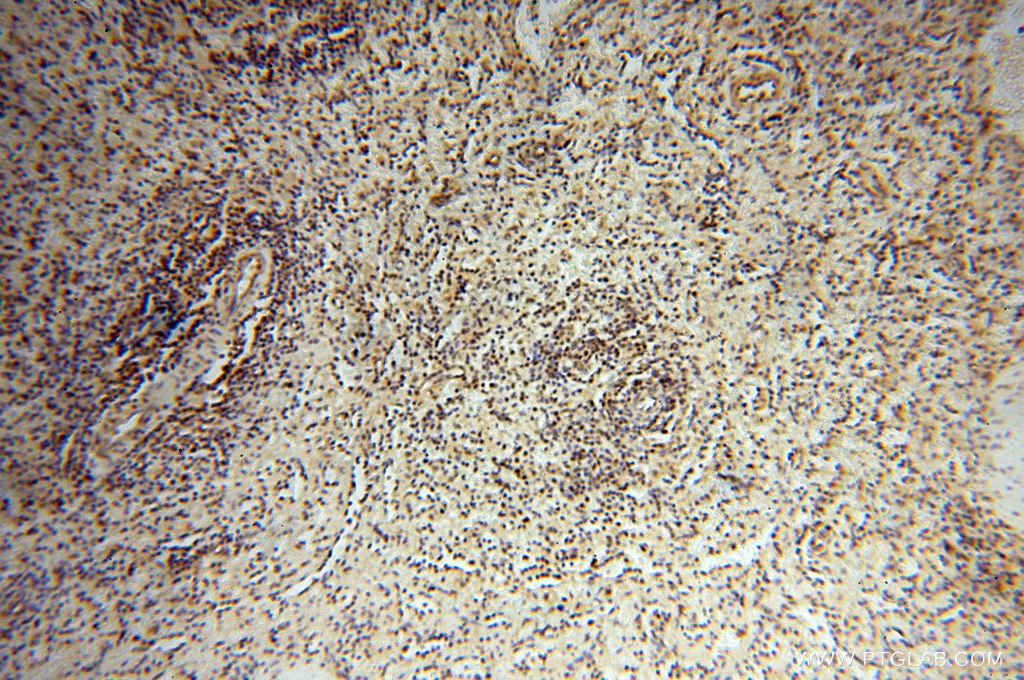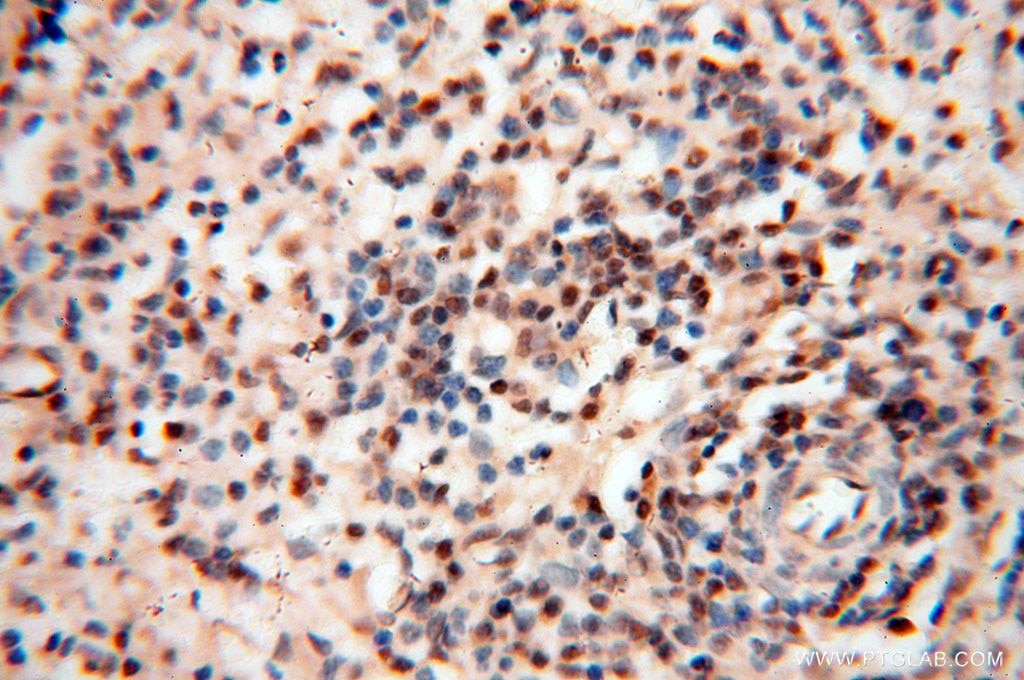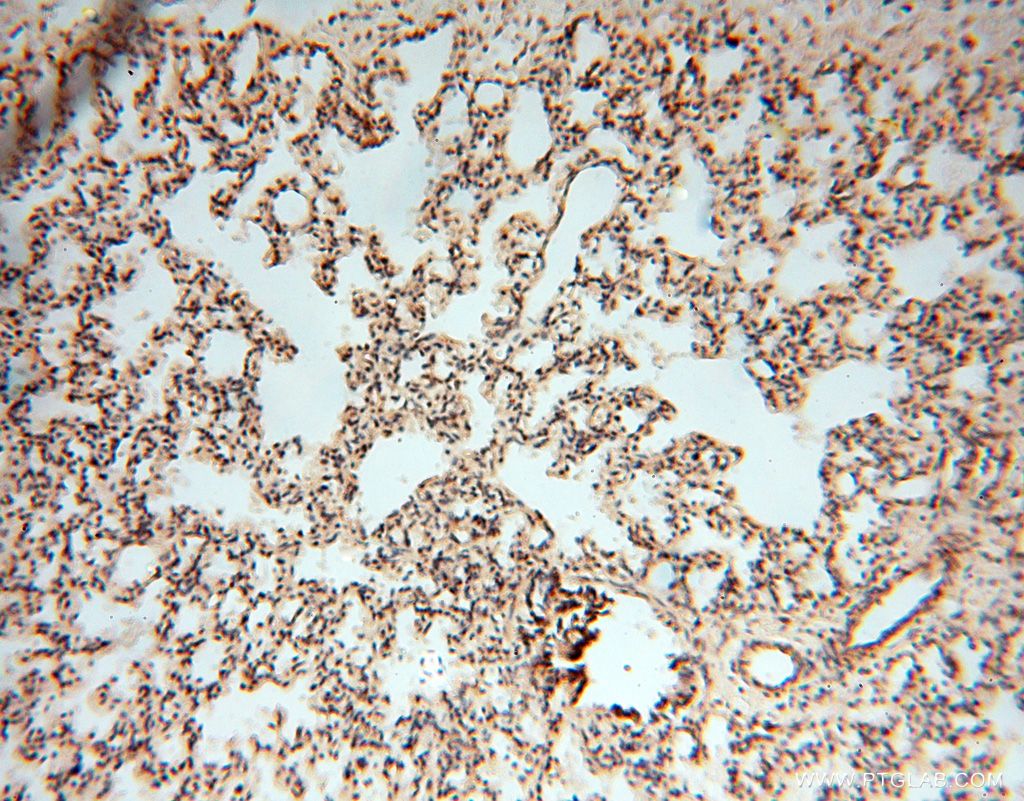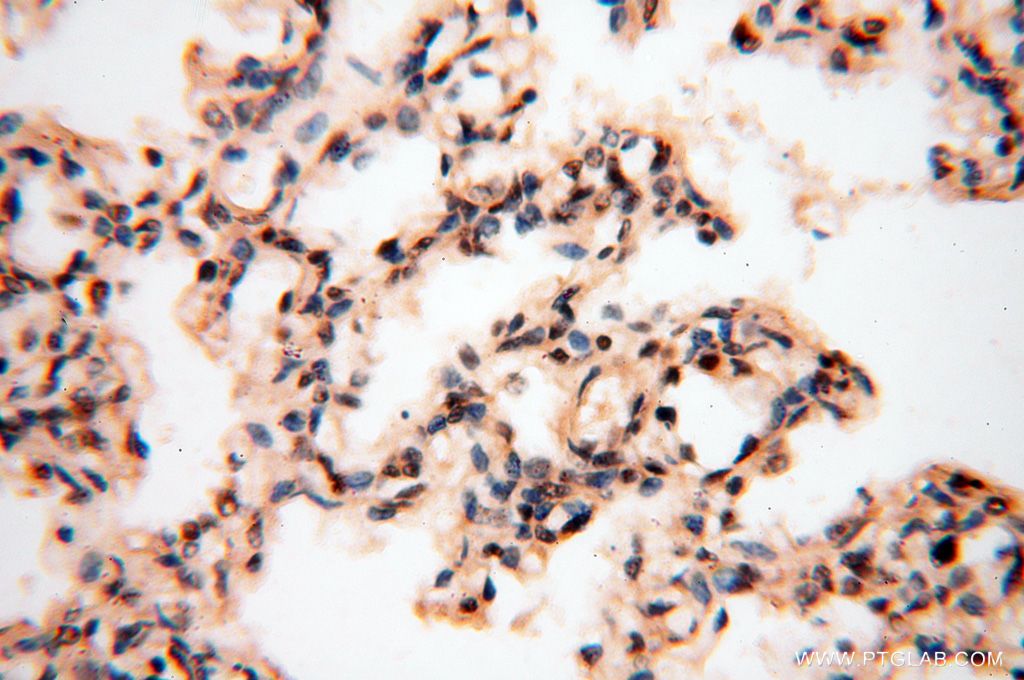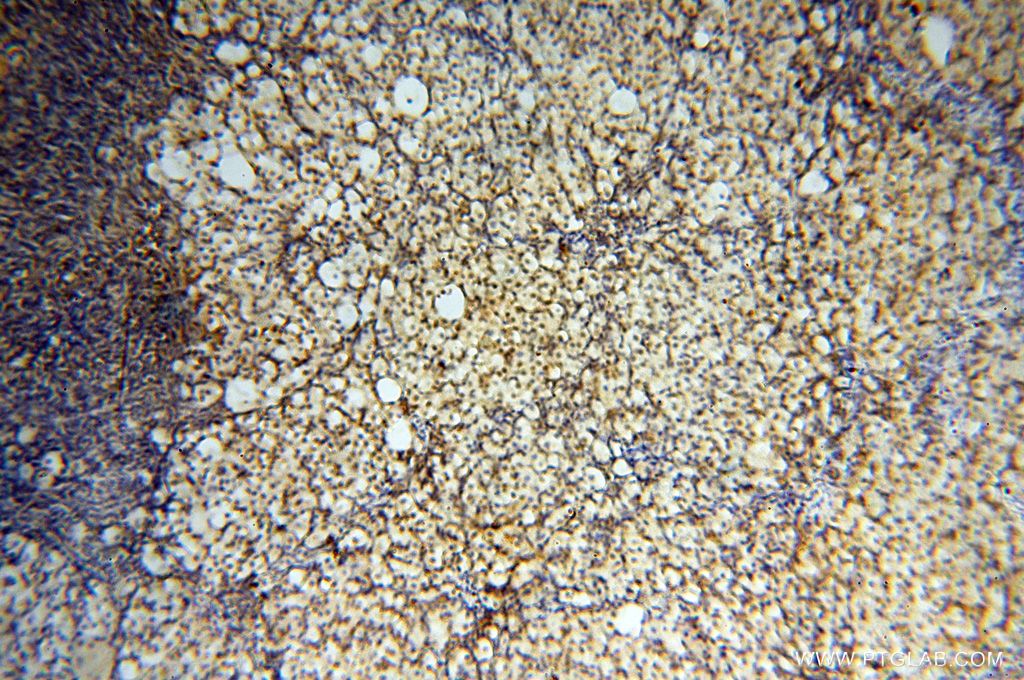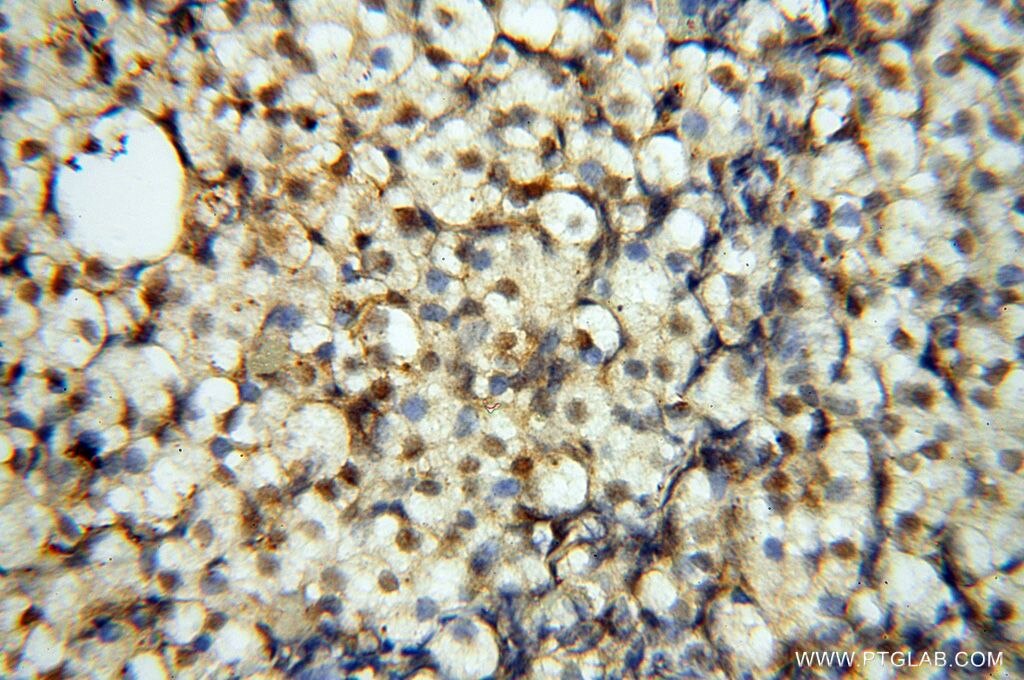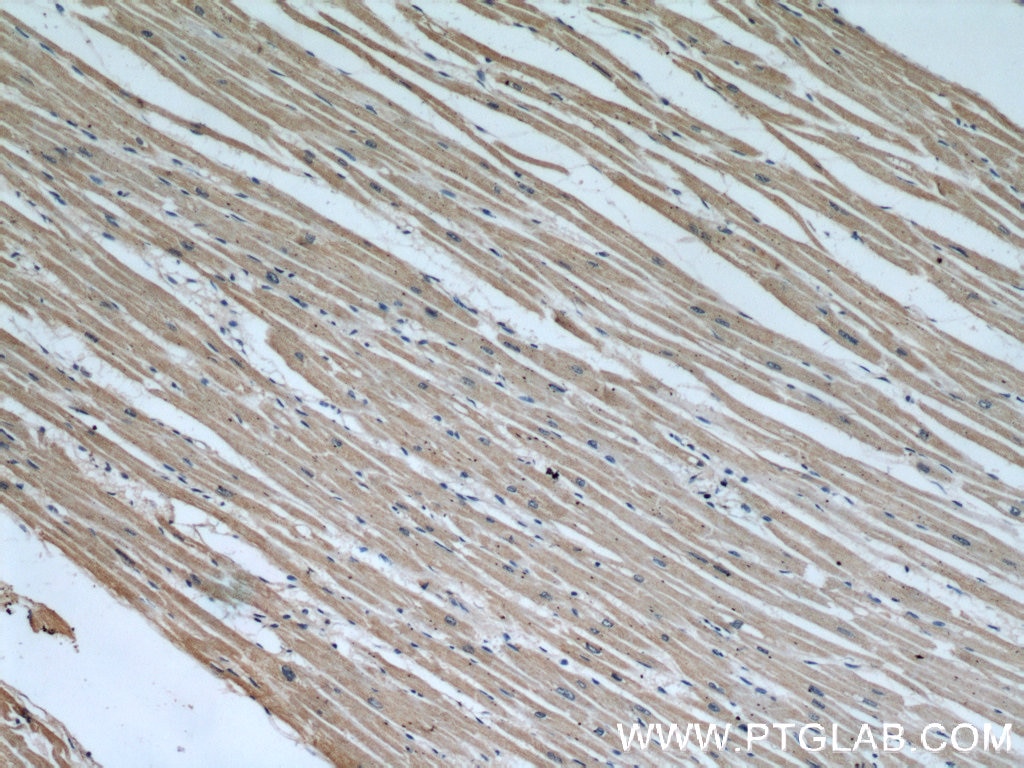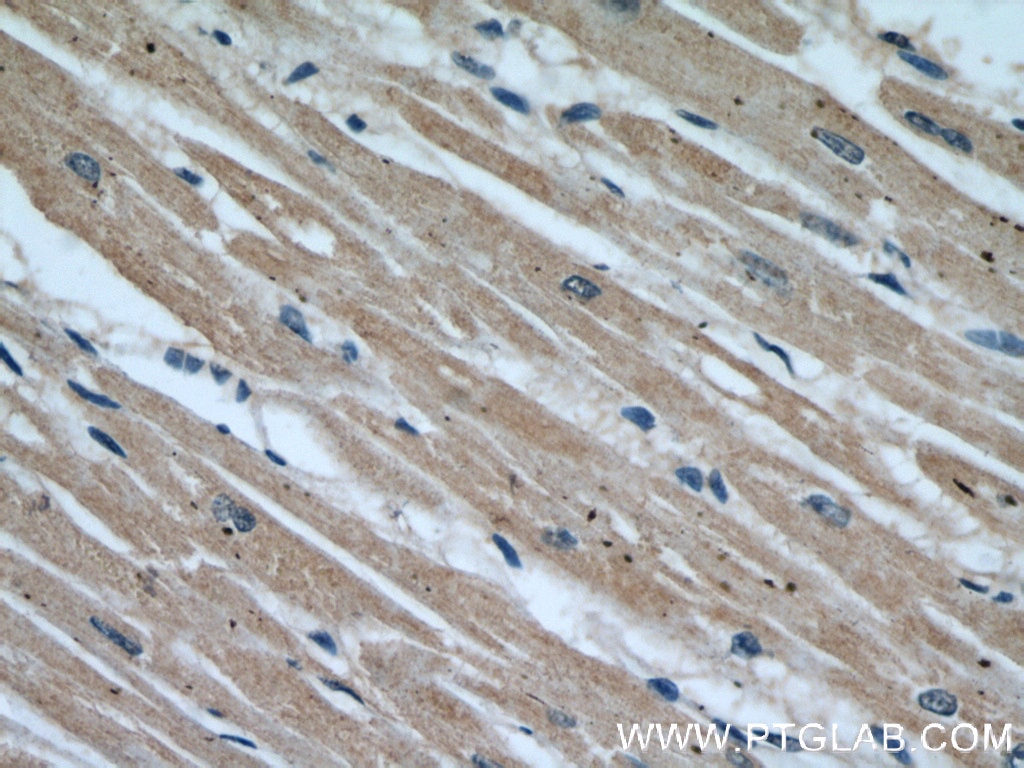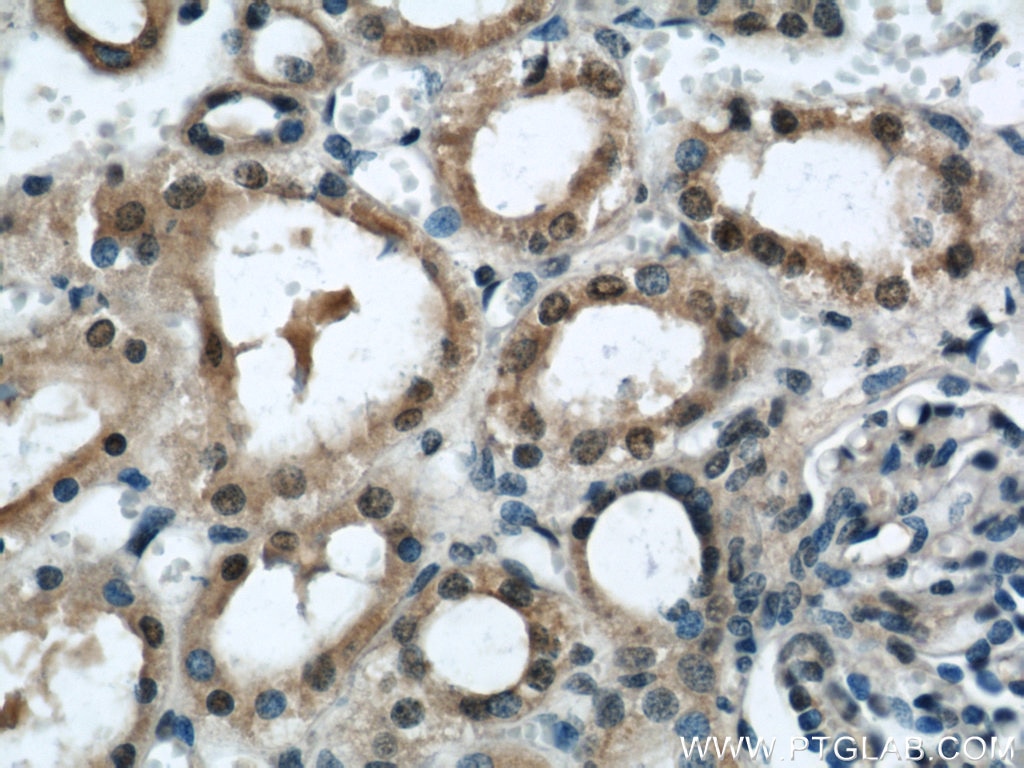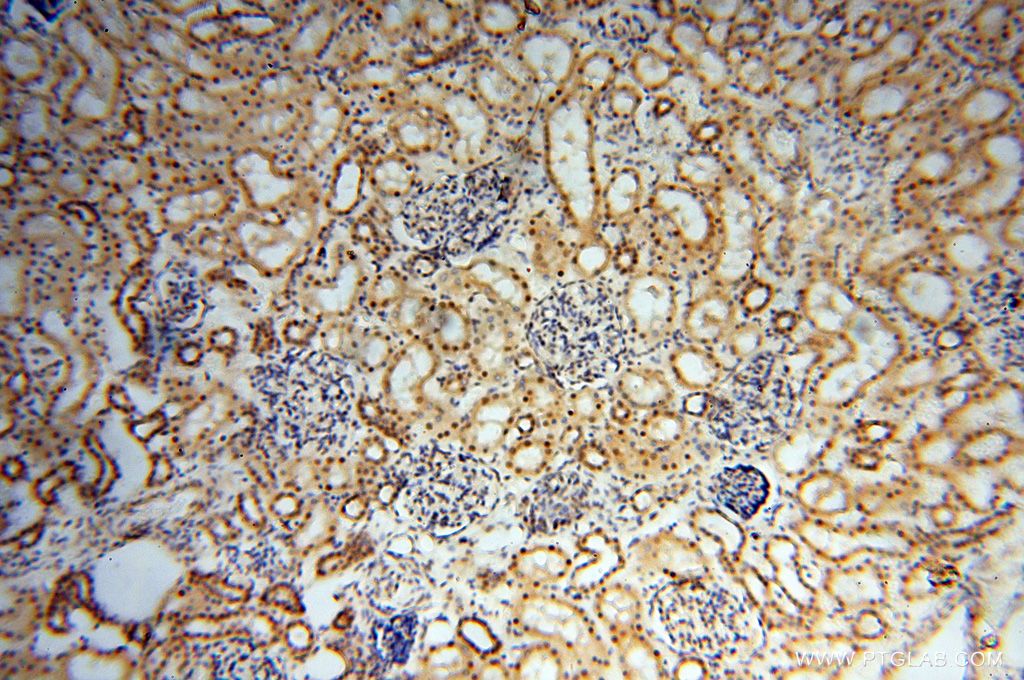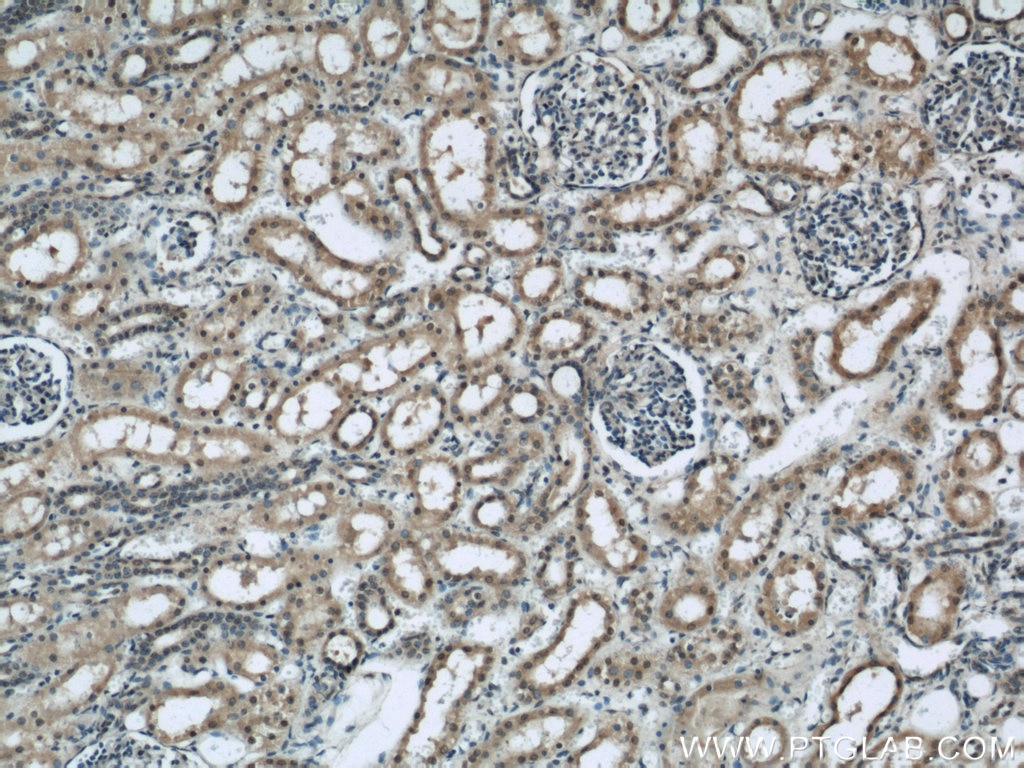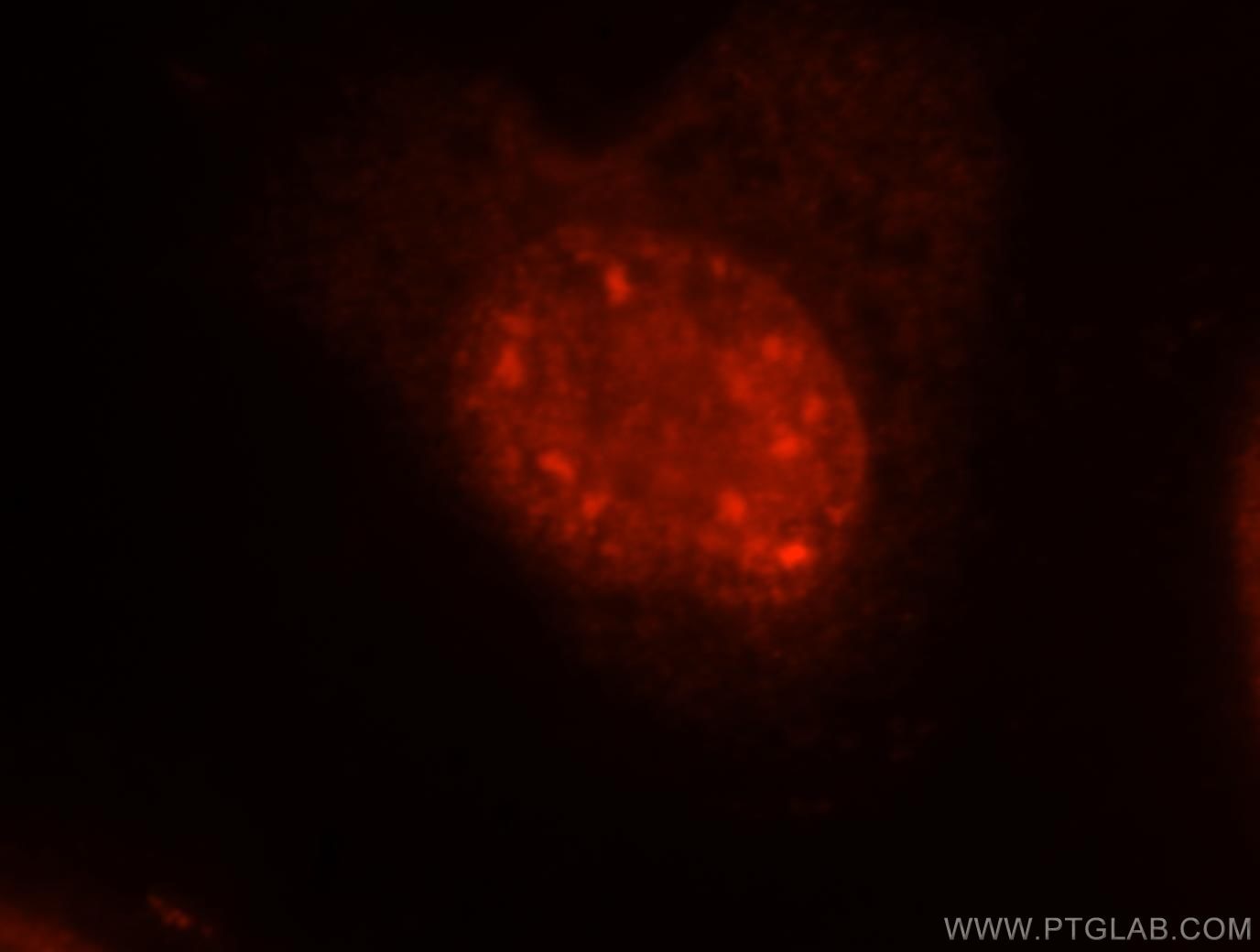- Phare
- Validé par KD/KO
Anticorps Polyclonal de lapin anti-EIF4A3
EIF4A3 Polyclonal Antibody for WB, IHC, IF/ICC, IP, ELISA
Hôte / Isotype
Lapin / IgG
Réactivité testée
Humain, rat, souris
Applications
WB, IHC, IF/ICC, IP, CoIP, RIP, ELISA
Conjugaison
Non conjugué
N° de cat : 17504-1-AP
Synonymes
Galerie de données de validation
Applications testées
| Résultats positifs en WB | cellules A549, cellules HEK-293, cellules HeLa, cellules HepG2, cellules MCF-7, tissu cardiaque de souris, tissu de thymus de souris, tissu hépatique de souris, tissu pulmonaire de souris |
| Résultats positifs en IP | tissu cardiaque de souris |
| Résultats positifs en IHC | tissu rénal humain, tissu cardiaque humain, tissu cérébral humain, tissu ovarien humain, tissu pulmonaire humain, tissu splénique humain, tissu testiculaire humain il est suggéré de démasquer l'antigène avec un tampon de TE buffer pH 9.0; (*) À défaut, 'le démasquage de l'antigène peut être 'effectué avec un tampon citrate pH 6,0. |
| Résultats positifs en IF/ICC | cellules MCF-7 |
Dilution recommandée
| Application | Dilution |
|---|---|
| Western Blot (WB) | WB : 1:1000-1:4000 |
| Immunoprécipitation (IP) | IP : 0.5-4.0 ug for 1.0-3.0 mg of total protein lysate |
| Immunohistochimie (IHC) | IHC : 1:20-1:200 |
| Immunofluorescence (IF)/ICC | IF/ICC : 1:10-1:100 |
| It is recommended that this reagent should be titrated in each testing system to obtain optimal results. | |
| Sample-dependent, check data in validation data gallery | |
Informations sur le produit
17504-1-AP cible EIF4A3 dans les applications de WB, IHC, IF/ICC, IP, CoIP, RIP, ELISA et montre une réactivité avec des échantillons Humain, rat, souris
| Réactivité | Humain, rat, souris |
| Réactivité citée | rat, Humain, souris |
| Hôte / Isotype | Lapin / IgG |
| Clonalité | Polyclonal |
| Type | Anticorps |
| Immunogène | EIF4A3 Protéine recombinante Ag11701 |
| Nom complet | eukaryotic translation initiation factor 4A, isoform 3 |
| Masse moléculaire calculée | 47 kDa |
| Poids moléculaire observé | 47 kDa |
| Numéro d’acquisition GenBank | BC003662 |
| Symbole du gène | EIF4A3 |
| Identification du gène (NCBI) | 9775 |
| Conjugaison | Non conjugué |
| Forme | Liquide |
| Méthode de purification | Purification par affinité contre l'antigène |
| Tampon de stockage | PBS with 0.02% sodium azide and 50% glycerol |
| Conditions de stockage | Stocker à -20°C. Stable pendant un an après l'expédition. L'aliquotage n'est pas nécessaire pour le stockage à -20oC Les 20ul contiennent 0,1% de BSA. |
Informations générales
EIF4A3 is a component of the exon junction complex (EJC), which assembles near exon-exon junctions of mRNAs as a result of splicing. EJC proteins involves in postsplicing events, including mRNA export, cytoplasmic localization, and nonsense-mediated decay. Its RNA-dependent ATPase and RNA-helicase activities are induced by CASC3, but abolished in presence of the MAGOH/RBM8A heterodimer, thereby trapping the ATP-bound EJC core onto spliced mRNA in a stable conformation. Besides, it involved in translational enhancement of spliced mRNAs after formation of the 80S ribosome complex and binds spliced mRNA in sequence-independent manner, 20-24 nucleotides upstream of mRNA exon-exon junctions
Protocole
| Product Specific Protocols | |
|---|---|
| WB protocol for EIF4A3 antibody 17504-1-AP | Download protocol |
| IHC protocol for EIF4A3 antibody 17504-1-AP | Download protocol |
| IF protocol for EIF4A3 antibody 17504-1-AP | Download protocol |
| IP protocol for EIF4A3 antibody 17504-1-AP | Download protocol |
| Standard Protocols | |
|---|---|
| Click here to view our Standard Protocols |
Publications
| Species | Application | Title |
|---|---|---|
J Hematol Oncol METTL16 promotes liver cancer stem cell self-renewal via controlling ribosome biogenesis and mRNA translation | ||
Cell Metab NEAT1 is essential for metabolic changes that promote breast cancer growth and metastasis. | ||
J Exp Clin Cancer Res Hypoxia-enhanced YAP1-EIF4A3 interaction drives circ_0007386 circularization by competing with CRIM1 pre-mRNA linear splicing and promotes non-small cell lung cancer progression | ||
Cell Death Differ eIF4A3 regulates the TFEB-mediated transcriptional response via GSK3B to control autophagy.
| ||
Mol Cancer Long noncoding RNA ZFAS1 promoting small nucleolar RNA-mediated 2'-O-methylation via NOP58 recruitment in colorectal cancer. |
